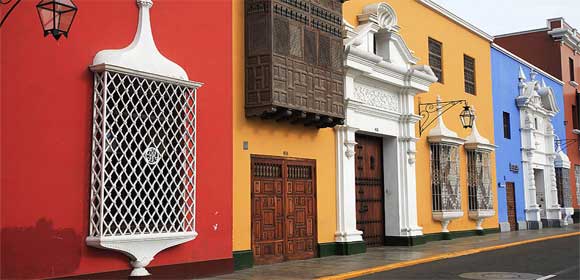Trujillo is a city in coastal northwestern Peru and the capital of La Libertad Region. It is located on the banks of the Moche River, near its mouth at the Pacific Ocean, in the Valley of Moche. This was a site of the great prehistoric Moche and Chimu cultures before the Inca conquest. It is the centre of the second most populous metropolitan area of Peru and most populous city of the North macroregion of the country.
Trujillo is also known as the “Capital of the everlasting Spring”, as well as the “Capital of Culture of Peru”.It has sponsored numerous national and international cultural events, and has a lively arts community. Current festivals include the “National Marinera Festival”, the Trujillo Spring Festival and the International Book Festival. Also is famous for its prominent writers such as Cesar Vallejo and Víctor Raúl Haya de la Torre, caballitos de totora, Trujillo’s gastronomy, etc.
Trujillo is close to two major archeological sites of pre-Columbian monuments: Chan Chan, the largest adobe city in the ancient world, designated a World Heritage Site by UNESCO in 1986; and the temples of the Sun and Moon (the largest adobe pyramid in Peru).
The city center contains many examples of colonial and religious architecture, often incorporating distinctive wrought ironwork. It includes residential areas, a central business district, and industrial supply distribution to the various districts. Catholicism is the predominant religion and 10 colonial churches are located within the old city wall, now encircled by Avenida España.
Trujillo maintains a mild climate and warm with temperatures around 19 °C for most of the year, which Trujillo is internationally known as City of Eternal Spring, because of its sunny and pleasant weather year-round.The part closest to the sea presented naturally, haze during the morning and usually, the temperature is lower than in the central and upper parts of the city.

